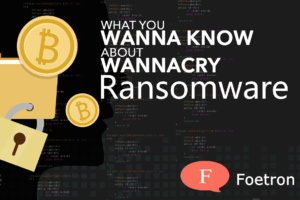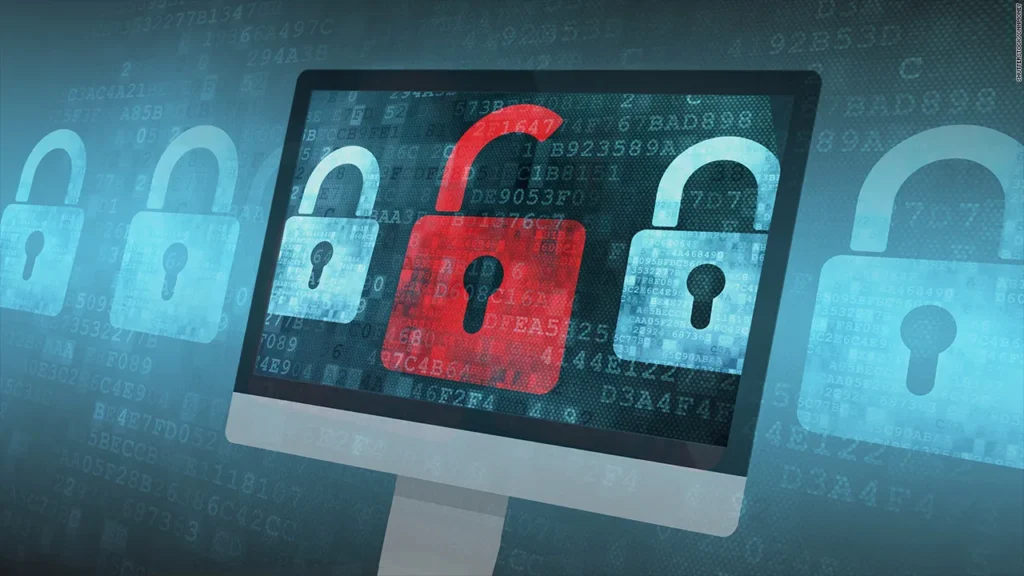[🪟 2023 Updated Microsoft Article 📤]
On May 12, 2017, the world witnessed a new ransomware that spreads like a worm by leveraging vulnerabilities that have been previously fixed. While security updates are automatically applied in most computers, some users and organisations may delay deployment of patches. Unfortunately, the ransomware, known as WannaCrypt, appears to have affected computers that have not applied the patch for these vulnerabilities. While the attack is unfolding, we remind you to update your IT systems if you have not already done so.
Through this blog post, we aim to help you understand the end-to-end working of a ransomware attack. Please note this threat is still under investigation. The attack is still active, and there is a possibility that the attacker will attempt to react to this detection response.
How did this attack start?
Ransomware threats do not typically spread rapidly. Threats like WannaCrypt (also known as WannaCry, WanaCrypt0r, WCrypt, or WCRY) usually leverage social engineering or email as primary attack method, relying on users downloading and executing a malicious email message. However, in this unique case, the ransomware perpetrators used publicly available exploit code for spreading WannaCrypt. Due to this exploit code, a regular ransomware became much powerful cyberattack due to worm-like functionalities. The worm-like features enabled this ransomware to enter into the unpatched machines despite the fix becoming available.
The exploit code used by WannaCrypt was designed to work only against unpatched Windows 7 and Windows Server 2008 (or earlier OS) systems, so Windows 10 PCs are not affected by this attack. The most probable ways in which this attack might have started are the two following:
- Arrival through social engineering emails designed to trick users to run the malware and activate the worm-spreading functionality with the SMB exploit
- Infection through SMB exploit when an unpatched computer is addressable from other infected machines.
How does this attack work?
The threat arrives as a dropper Trojan that has the following two components:
- A component that attempts to exploit the SMB CVE-2017-0145 vulnerability in other computers.
- The ransomware known as WannaCrypt
The dropper tries to connect the following domains using the API InternetOpenUrlA():
- www[.]iuqerfsodp9ifjaposdfjhgosurijfaewrwergwea[.]com
- www[.]ifferfsodp9ifjaposdfjhgosurijfaewrwergwea[.]com
If connection to the domains is successful, the dropper does not infect the system further with ransomware or try to exploit other systems to spread; it simply stops execution. However, if the connection fails, the threat proceeds to drop the ransomware and creates a service on the system.
In other words, unlike in most malware infections, IT Administrators should NOT block these domains. Note that the malware is not proxy-aware, so a local DNS record may be required. This does not need to point to the Internet, but can resolve to any accessible server which will accept connections on TCP 80.
The threat creates a service named mssecsvc2.0, whose function is to exploit the SMB vulnerability in other computers accessible from the infected system:
Service Name: mssecsvc2.0
Service Description: (Microsoft Security Center (2.0) Service)
Service Parameters: “-m security”
How WannaCry ransomware is affecting your organisation’s IT Systems?
The ransomware component is a dropper that contains a password-protected .zip archive in its resource section. The document encryption routine and the files in the .zip archive contain support tools, a decryption tool, and the ransom message. In the samples we analyzed, the password for the .zip archive is “WNcry@2ol7”.
When run, WannaCrypt creates the following registry keys:
- HKLM\SOFTWARE\Microsoft\Windows\CurrentVersion\Run\\<random string> = “<malware working directory>\tasksche.exe”
- HKLM\SOFTWARE\WanaCrypt0r\\wd = “<malware working directory>”
It changes the wallpaper to a ransom message by modifying the following registry key:
- HKCU\Control Panel\Desktop\Wallpaper: “<malware working directory>\@WanaDecryptor@.bmp”
It creates the following files in the malware’s working directory:
- 00000000.eky
- 00000000.pky
- 00000000.res
- 274901494632976.bat
- @Please_Read_Me@.txt
- @WanaDecryptor@.bmp
- @WanaDecryptor@.exe
- b.wnry
- c.wnry
- f.wnry
- m.vbs
- msg\m_bulgarian.wnry
- msg\m_chinese (simplified).wnry
- msg\m_chinese (traditional).wnry
- msg\m_croatian.wnry
- msg\m_czech.wnry
- msg\m_danish.wnry
- msg\m_dutch.wnry
- msg\m_english.wnry
- msg\m_filipino.wnry
- msg\m_finnish.wnry
- msg\m_french.wnry
- msg\m_german.wnry
- msg\m_greek.wnry
- msg\m_indonesian.wnry
- msg\m_italian.wnry
- msg\m_japanese.wnry
- msg\m_korean.wnry
- msg\m_latvian.wnry
- msg\m_norwegian.wnry
- msg\m_polish.wnry
- msg\m_portuguese.wnry
- msg\m_romanian.wnry
- msg\m_russian.wnry
- msg\m_slovak.wnry
- msg\m_spanish.wnry
- msg\m_swedish.wnry
- msg\m_turkish.wnry
- msg\m_vietnamese.wnry
- r.wnry
- s.wnry
- t.wnry
- TaskData\Tor\libeay32.dll
- TaskData\Tor\libevent-2-0-5.dll
- TaskData\Tor\libevent_core-2-0-5.dll
- TaskData\Tor\libevent_extra-2-0-5.dll
- TaskData\Tor\libgcc_s_sjlj-1.dll
- TaskData\Tor\libssp-0.dll
- TaskData\Tor\ssleay32.dll
- TaskData\Tor\taskhsvc.exe
- TaskData\Tor\tor.exe
- TaskData\Tor\zlib1.dll
- taskdl.exe
- taskse.exe
- u.wnry
WannaCrypt may also create the following files:
- %SystemRoot%\tasksche.exe
- %SystemDrive%\intel\<random directory name>\tasksche.exe
- %ProgramData%\<random directory name>\tasksche.exe
It may create a randomly named service that has the following associated ImagePath: “cmd.exe /c “<malware working directory>\tasksche.exe””.
It then searches the whole computer for any file with any of the following file name extensions: .123, .jpeg , .rb , .602 , .jpg , .rtf , .doc , .js , .sch , .3dm , .jsp , .sh , .3ds , .key , .sldm , .3g2 , .lay , .sldm , .3gp , .lay6 , .sldx , .7z , .ldf , .slk , .accdb , .m3u , .sln , .aes , .m4u , .snt , .ai , .max , .sql , .ARC , .mdb , .sqlite3 , .asc , .mdf , .sqlitedb , .asf , .mid , .stc , .asm , .mkv , .std , .asp , .mml , .sti , .avi , .mov , .stw , .backup , .mp3 , .suo , .bak , .mp4 , .svg , .bat , .mpeg , .swf , .bmp , .mpg , .sxc , .brd , .msg , .sxd , .bz2 , .myd , .sxi , .c , .myi , .sxm , .cgm , .nef , .sxw , .class , .odb , .tar , .cmd , .odg , .tbk , .cpp , .odp , .tgz , .crt , .ods , .tif , .cs , .odt , .tiff , .csr , .onetoc2 , .txt , .csv , .ost , .uop , .db , .otg , .uot , .dbf , .otp , .vb , .dch , .ots , .vbs , .der” , .ott , .vcd , .dif , .p12 , .vdi , .dip , .PAQ , .vmdk , .djvu , .pas , .vmx , .docb , .pdf , .vob , .docm , .pem , .vsd , .docx , .pfx , .vsdx , .dot , .php , .wav , .dotm , .pl , .wb2 , .dotx , .png , .wk1 , .dwg , .pot , .wks , .edb , .potm , .wma , .eml , .potx , .wmv , .fla , .ppam , .xlc , .flv , .pps , .xlm , .frm , .ppsm , .xls , .gif , .ppsx , .xlsb , .gpg , .ppt , .xlsm , .gz , .pptm , .xlsx , .h , .pptx , .xlt , .hwp , .ps1 , .xltm , .ibd , .psd , .xltx , .iso , .pst , .xlw , .jar , .rar , .zip , .java , .raw.
WannaCrypt encrypts all files it finds and renames them by appending .WNCRY to the file name. For example, if a file is named picture.jpg, the ransomware encrypts and renames the file to picture.jpg.WNCRY.
This ransomware also creates the file @Please_Read_Me@.txt in every folder where files are encrypted. The file contains the same ransom message shown in the replaced wallpaper image (see screenshot below).
After completing the encryption process, the malware deletes the volume shadow copies by running the following command:
cmd.exe /c vssadmin delete shadows /all /quiet & wmic shadowcopy delete & bcdedit /set {default} bootstatuspolicy ignoreallfailures & bcdedit /set {default} recoveryenabled no & wbadmin delete catalog -quiet
It then replaces the desktop background image with the following message:

It also runs an executable showing a ransom note which indicates a $300 ransom in Bitcoins as well as a timer:

The text is localized into the following languages: Bulgarian, Chinese (simplified), Chinese (traditional), Croatian, Czech, Danish, Dutch, English, Filipino, Finnish, French, German, Greek, Indonesian, Italian, Japanese, Korean, Latvian, Norwegian, Polish, Portuguese, Romanian, Russian, Slovak, Spanish, Swedish, Turkish, and Vietnamese.
The ransomware also demonstrates the decryption capability by allowing the user to decrypt a few random files, free of charge. It then quickly reminds the user to pay the ransom to decrypt all the remaining files.

How attack is spreading due to worm-like functionality?
The worm functionality attempts to infect unpatched Windows machines in the local network. At the same time, it also executes massive scanning on Internet IP addresses to find and infect other vulnerable computers. This activity results in large SMB traffic from the infected host, which can be observed by SecOps personnel, as shown below.

The Internet scanning routine randomly generates octets to form the IPv4 address. The malware then targets that IP to attempt to exploit CVE-2017-0145. The threat avoids infecting the IPv4 address if the randomly generated value for first octet is 127 or if the value is equal to or greater than 224, in order to skip local loopback interfaces. Once a vulnerable machine is found and infected, it becomes the next hop to infect other machines. The vicious infection cycle continues as the scanning routing discovers unpatched computers.
When it successfully infects a vulnerable computer, the malware runs kernel-level shellcode that seems to have been copied from the public backdoor known as DOUBLEPULSAR, but with certain adjustments to drop and execute the ransomware dropper payload, both for x86 and x64 systems.
You can update your Windows OS with latest patches using this blog post. Further, you can reach out to us at cloud@foetron.local for understanding how you can secure your IT systems.



